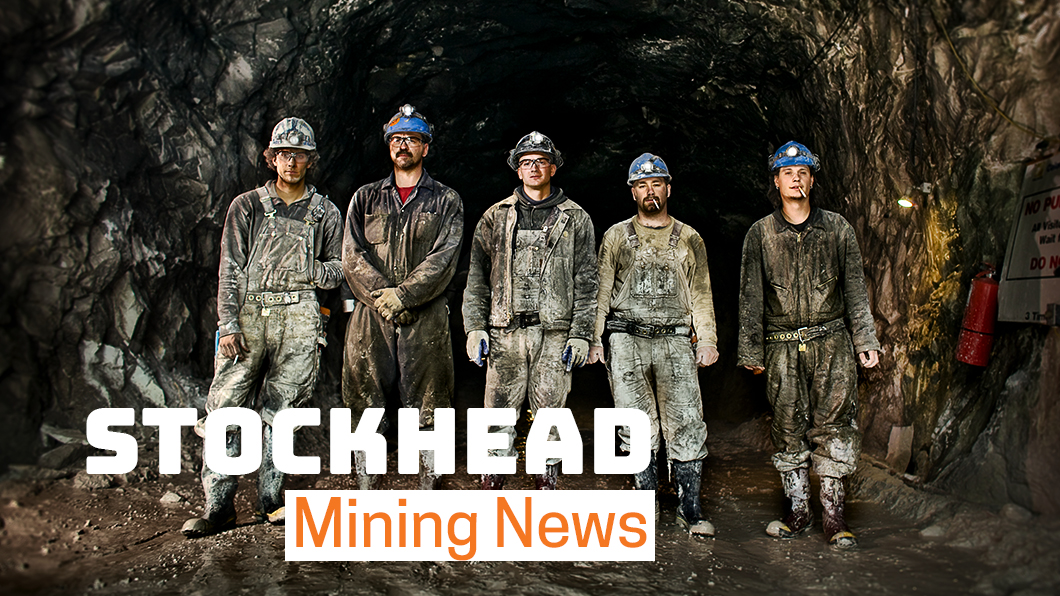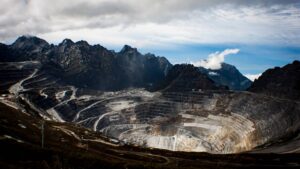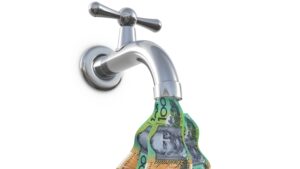Here’s why the experts are saying the copper bull run could reach US$33,000

Pic: Tyler Stableford / Stone via Getty Images
The laundry list of factors driving the copper bull run just keeps getting longer and the price expectations are off the charts, with market watchers predicting the red metal could top US$33,000 ($42,507) a tonne before the end of the decade.
The copper price hit an all-time-high of $US10,724 a tonne last month, notching an over 35 per cent gain since the start of the year. It is still up nearly 26 per cent, hovering just below $US10,000 a tonne.
Late last week the Democratic Republic of Congo (DRC) — the world’s leading producer of cobalt and Africa’s biggest copper producer — made good on a longstanding threat to ban cobalt and copper concentrate exports.
While the risk in the DRC appears more to do with raising the cost of exports to direct more miners towards in-country smelting as opposed to a total export ban, it is yet another factor that could weigh on an already constrained market at a time of rapidly rising demand.
The copper price has been one of the top performing commodities this year, along with iron ore which also hit all-time highs, and the bulls are out in force with several market commentators stressing the copper market is at the start of a new ‘super-cycle’.
“Copper has emerged as a leader in this commodity bull market. We are strong believers that copper prices are heading significantly higher,” Leigh Goehring and Adam Rozencwajg, managing partners of New York-headquartered resources fund manager Goehring & Rozencwajg, said recently.
“After bottoming at US$1.95 per pound in early 2016, copper prices have more than doubled. Copper equities (as measured by the COPX ETF) have done even better, rallying over 200 per cent — more than twice the increase of the S&P 500.”
Goehring & Rozencwajg noted that the previous copper bull run took place between 2001 and 2011 and saw prices rise seven-fold, from US$0.60 to US$4.62 per pound.
“We wholeheartedly embraced that copper bull market and maintained sizable exposure throughout the rally,” they said.
“The fundamentals today are even more bullish. We would not be surprised to see copper prices again advance a minimum of seven-fold before this bull market is over.
“Using US$1.95 as our starting point, we expect copper prices to potentially peak near US$15 (US$33,069) per pound by the latter part of this decade.”
Niv Dagan, executive director at boutique investment firm Peak Asset Management, told Stockhead in mid-May he expected to see copper rise above US$15,000/tonne over the next 12 months.
“Global EV demand, stockpiling combined with depleted inventories, will be the key catalyst,” he said.
Sam Spring, former Goldman Sachs analyst and now CEO of newly listed small cap copper explorer Kincora Copper (ASX:KCC), told Stockhead the supply side for copper, and risk of a supply side shock after recent years of relatively limited disruptions, continued to be in focus given the already tight market.
He said this was illustrated by current TC/RCs (copper concentrate treatment and refining charges) and inventory levels.
“At the moment there is a query over copper exports from the DRC, strikes at BHP’s Escondida and Spence copper mines in Chile, a bill to ratchet up royalties in Chile ahead of a general election in November and a similar narrative in many other jurisdictions which are either important sources of new copper supply or existing production,” he explained.
“To put the Chilean bill into context, a recent note from Goldmans estimated, if unaltered, the live bill could put at risk some 1 million tonnes of annual output, representing around 4 per cent of global copper supply, at a time where Codelco is in the early stages of $35 billion of spending until 2030 to more or less keep its existing production profile just flat.”
Spring said elections and COVID driven impacts on state budgets were also at play in Peru, which accounts for around 13 per cent of global copper supply.
“A run-off between the two leading candidates is scheduled for June 6 and the Mongolian presidential election is on June 9, coming at a time of ongoing discussions between Rio Tinto (ASX:RIO) and the Mongolian government regarding the commencement of the underground at Oyu Tolgoi, which is the largest growth profile for Rio Tinto.
“The iron ore price is still benefiting from the COVID related shocks to supply in Brazil and India, with risk that copper could similarly feel a further impact in the nearer term.”
Investors flock to ASX stocks during copper bull run
The bull market has seen an increase in new copper plays successfully land on the ASX thanks to strong investor interest.
Kincora Copper lit up the boards at the end of March following a heavily subscribed IPO.
After initially targeting $8m, the company quickly upped this to $10m and received bids for many multiples of that from recognised local/international specialist resources funds, family offices and retail investors.
Kincora has multiple drill rigs at work on its flagship Trundle project in New South Wales’ prolific Lachlan Fold Belt.
Initial drilling activities began in April last year at Trundle, which shares the same mineralised system as the Northparkes mine – Australia’s second-largest porphyry mine hosting 4.5 million tonnes of copper and 5.5 million oz of gold.
Kincora shares are up 50 per cent on its 20c IPO price.
QMines (ASX:QML) also recently made its debut following an IPO that saw it attract over $12m worth of subscriptions, beating its minimum target of $10m.
The company has 100 per cent ownership of four advanced copper-gold projects in Queensland, spanning 978sqkm, which includes the high-grade historic Mt Chalmers copper-gold mine.
Mt Chalmers was mined sporadically between 1898 and 1982, producing 1.24 million tonnes at 2 per cent copper, 3.6 grams per tonne (g/t) gold and 19g/t silver.
No mining has been undertaken since 1982, but there’s still plenty of exploration upside.
QMines has already delivered an initial JORC 2012-compliant inferred resource of 3.9 million tonnes at 1.15 per cent copper, 0.81g/t gold and 8.4g/t silver (which combined is 1.87 per cent copper equivalent), and is undertaking between 32,000m and 62,000m of drilling over the next two years.
Shares have climbed over 33 per cent since its IPO to trade at 40c currently.
Another Lachlan Fold Belt (LFB) copper hunter, Askari Metals, is also lining up to join the ASX.
The company, which is aiming to list by early July this year with an enterprise value of $2.77m, has a portfolio of five fully owned projects located in New South Wales and Western Australia.
The Springdale copper-gold project in the LFB in particular has witnessed significant historic production. Limited drilling has been carried out below the old workings, but it is located in the right neighbourhood for big copper-gold porphyry discoveries.
Askari’s Callawa copper project is in a proven copper-gold district of Western Australia and lies to the west of Rio Tinto’s (ASX:RIO) headline grabbing Winu project and is northwest of Metals X’s (ASX:MLX) large Nifty copper mine.
Previous rock chip samples returned grades of up to 28.7 per cent copper at surface.
Building a presence in an emerging copper province
Peak Minerals (ASX:PUA), meanwhile, has gone on a bit of a run after it locked in a deal to acquire a bunch of exploration tenements in WA prospective for big copper deposits.
The acquisition gives Peak control over a significant ground position in an underexplored region that has shown similarities to OZ Minerals’ (ASX:OZL) Succoth copper and Nebo-Babel nickel-copper prospects in the Musgrave Province of Western Australia.
Previous explorers have been impeded by a fragmented tenement holding, principal geologist Barbara Duggan says.
“The significance of acquiring the greater Copper Hills project is being able to systematically explore in a large area with known copper mineralisation,” Duggan says.
Over the coming months Peak plans to undertake an extensive field-based exploration program consisting of gravity, EM and drilling programs.
Shares rallied 28 per cent to 2.3c this week.
Cohiba Minerals (ASX:CHK) has been busy making headlines next door to mining giant BHP (ASX:BHP) in South Australia’s Gawler Craton – a pretty good place to be if you want to make a new iron oxide-copper-gold (IOCG) discovery.
The company is undertaking a multi-million-dollar exploration campaign, including drilling up to 19,000m, after drilling at its Horse Well prospect in March encountered rock types typical of an IOCG environment and returned high grades of up to 12.15 per cent copper.
Cohiba has uncovered multiple targets in close proximity to BHP’s giant Olympic Dam mine and OZ Minerals’ (ASX:OZL) $1bn Carrapateena copper-gold mine.
Chairman Mordechai Benedikt has been progressively building his stake in the junior copper explorer, adding another 5 million shares to his portfolio in May. He became a substantial shareholder back in January.
The stock has more than doubled since July last year and is currently trading at around 2c.
Xanadu Mines (ASX:XAM) has also started to take off again this year, with shares climbing 60 per cent since February to 4.8c this week.
Last week the company revealed it hit a whopping 499m at 0.31 per cent copper and 0.39g/t gold (0.51 per cent copper equivalent) from 656m during drilling at its flagship Kharmagtai project in Mongolia.
CEO Dr Andrew Stewart said the result expanded Xanadu’s interpreted zone of mineralisation along strike and provided critical information for future targeting.
Kharmagtai hosts a resource of 600 million tonnes at 0.49 per cent copper equivalent for 2.9 million tonnes copper equivalent in contained metal.
Xanadu is ramping up drilling with the addition of a third rig this month.

UNLOCK INSIGHTS
Discover the untold stories of emerging ASX stocks.
Daily news and expert analysis, it's free to subscribe.
By proceeding, you confirm you understand that we handle personal information in accordance with our Privacy Policy.








